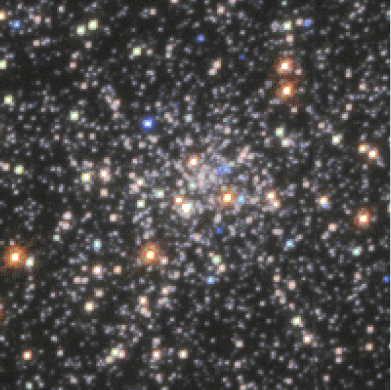One look at the night sky and we see that some stars are brighter than others. At first you might think that this is a good way to tell stars apart but it is a little trickier than that. It is true that if you were pointing out a particular star to your friend, you might say "Find the brightest star in the sky and look at the faint one beside it" and she would immediately be able to pick out the star you mean. But, it turns out that the relative brightness they have in the sky is not enough to tell whether one star is different from another.
A car with its bright headlights on is not annoying when it is far away. However, once it is as close as a few hundred meters, it becomes hard to look at because it is so bright. What has changed? The headlight is still the same, its true brightness hasn't changed. But it has gotten closer, so its apparent brightness is higher.
This is also true for stars. Two identical stars at different distances look to have different brightnesses to our eye. So, unless we know the distance to the star we cannot use it's brightness alone to tell if it is different from any other kind of star. This, in part, explains why the Sun looks so different from other stars: it is a lot closer!

If we look a little more carefully at the night sky we notice that stars are slightly different colors (see image to left), some are red, some blue, some yellow, etc. It turns out that this is a very good way to tell them apart. Stars which are the same color are more likely to be similar types of stars. Hot stars are typically blue in color while cool stars are red.
The color of the star is a measure of how hot it is and can even tell us a lot about what chemical elements are present in it. A classic example of this is that of sodium street lamps and neon store signs. A lamp filled with sodium gas has a distinctive yellow color while an argon lamp, for example, is typically red. By identifying the characteristic colors emitted by a star, it is possible to determine which elements make up the gas and what the temperature of the gas is. These stellar fingerprints are observed using an instrument called a spectrometer. A simple example of a spectrometer is a prism that splits light up into a spectrum of colors (the way raindrops split sunlight into a rainbow). The spectrum of a star is used to compare it to others. The Sun has a surface temperature of 5,800 degrees Kelvin. The dominant color of the Sun's radiation is green. Our eyes cannot tell the difference between the large amounts of blue, green, and red light coming from the Sun and therefore register its color as white.
Back to Today's topic